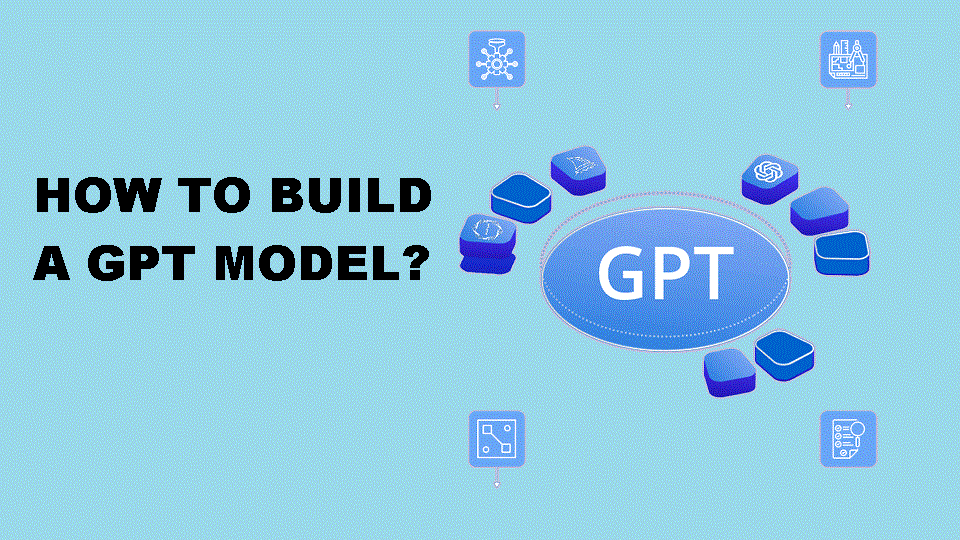

ChatGPT stands for "Generative Pre-trained Transformer." This is a type of machine learning model that uses deep learning to create text in normal language. GPT models are based on a transformer architecture, a neural network that handles sequential data, like language.

The GPT models are pre-trained on big text sets, like Wikipedia, books, or news articles, and then fine-tuned on specific language tasks, like translating languages, answering questions, and classifying texts. This process of pre-training and fine-tuning allows the model to learn the statistical patterns and semantic links between words and phrases and to come up with coherent and correct answers to text-based questions.
The latest version of the GPT model, GPT-3, has more than 175 billion factors and is considered one of the most advanced language models available today. It is very good at jobs like natural language processing, making up new languages, and translating between languages.
GPT models have two main stages: pre-training and fine-tuning.
1. Pre-training: The GPT model is trained on a lot of text input using techniques for "unsupervised learning." The goal is to teach the model to determine the next word in a given line or string of words. This is done by giving the model a string of words and telling it to guess the next word in the string based on the statistical patterns it has learned from the training data. The model is taught using a method called "masked language modelling." In this method, some of the words in the input sequence are randomly covered up, and the model is asked to guess what those words are based on the context of the words around them.
2. Fine-tuning: In the fine-tuning stage, supervised learning methods are used to train the already trained model on a specific task, like translating a language or classifying text. The model is given examples of the job it is learning to do and the correct answer. It then changes its parameters to reduce the difference between what it predicts and what is right.
The GPT model uses a transformer architecture to handle the input sequence of words during pre-training and fine-tuning. The architecture of a transformer is made up of many layers of neural networks that all handle the input sequence at the same time. The model has ways to pay attention to the most important parts of the input sequence and give them more weight. This lets the model work well with long text strings and understand how words and sentences relate semantically.
To make a GPT model, you need a lot of knowledge about machine learning, deep learning, and natural language processing (NLP). Here are some of the most important things you need to know to build a GPT model:
1. Data: For GPT models to learn the statistical patterns and semantic links between words and phrases, they need a lot of training data. The data should be varied and show how the model is meant to work in the language and topic.
2. Resources for computing: GPT models require a lot of computing power and high-performance tools like GPUs or TPUs to train and run well.
3. Frameworks and libraries: There are several open-source deep learning frameworks, such as TensorFlow, PyTorch, and Keras, that provide the tools and libraries needed to build and train GPT models.
4. Knowledge of Natural Language Processing (NLP): To build a GPT model, you must know a lot about NLP ideas like tokenization, part-of-speech tagging, and named entity recognition. Knowing about transformer architectures, attention mechanisms, and optimization methods is also very important.
5. Methods of training: Most GPT models are trained using supervised and unsupervised learning methods. The training method should be well-thought-out so that the model learns the right patterns and relationships and does the right job on the goal task.
6. Metrics for judging performance: Depending on the job the model is meant to do, metrics like perplexity, accuracy, or F1 score should be used to judge the performance of GPT models.

To make a GPT model, you must go through several complicated steps and know much about machine learning and natural language processing. Here is a step-by-step overview of how to build a GPT model:
1. Data collection and preprocessing: Collect big text data representative of the language and domain you want your model to work in. Preprocess the data by tokenizing the text, removing stop words and punctuation, and using other text cleaning methods.
2. Preprocessing and tokenization: Use a byte pair encoding (BPE) method to separate the text data into strings of words or subwords.
3. Build the GPT model architecture: To build the GPT model architecture, use a deep learning system like TensorFlow or PyTorch. The architecture should have an encoder and decoder based on transformers, methods for paying attention and multiple layers of neural networks.
4. Set the model's weight: You can set the model's weights by chance or by using the weights from a pre-trained model, such as a pre-trained GPT model.
5. Train the GPT model: Use a mix of supervised and unsupervised learning methods to train the GPT model on the preprocessed and tokenized text data. The model should be taught to guess the next word in a sequence based on the context of the words that came before it.
6. Fine-tune the GPT model: Use supervised learning techniques to train the GPT model more on a particular task, such as text classification or language translation. Fine-tuning helps the model learn the specific patterns and relationships it needs to do the target job.
7. Evaluate the GPT model: Use perplexity, accuracy, and F1 score to judge how well the GPT model works. Use confirmation data to ensure the model works well when given new information.
8. Deploy the GPT model: Once the GPT model has been trained and tested, it can be used in production settings to produce natural language text or do other language-related tasks.
Note that this is a high-level guide, and the details of how to build a GPT model will depend on the job and how it is done. Building a GPT model is a difficult and time-consuming process that needs a lot of knowledge about machine learning and natural language processing.
Building a GPT model is a difficult job requiring careful consideration of several factors to ensure it works well. Here are some things to think about when making a GPT model:
1. Quality and amount of data: For GPT models to learn the statistical patterns and semantic links between words and phrases, they need a lot of high-quality data. The data should be varied and show how the model is meant to work in the language and topic.
2. Preprocessing and tokenization: One of the most important steps in making a GPT model is preprocessing and tokenizing the text data into strings of words or subwords. The tokenization method can greatly affect how well the model works, so it's important to choose a method that strikes a good mix between granularity and speed.
3. Model architecture: The GPT model architecture should be carefully made to include a transformer-based encoder and decoder, attention methods, and multiple layers of neural networks. The size of the model and the number of layers should be based on how much computer power is available and how well the model should work.
4. Initialization and training: How the GPT model weights are set up at the beginning and how the model is trained can greatly affect how well it works. Using unsupervised learning techniques to pre-train the model on a big set of text data can help the model do better on tasks that come later.
5. Fine-tuning: Fine-tuning the GPT model on a particular task, like classifying text or translating languages, can help the model learn the specific patterns and relationships needed for the target task. The process of fine-tuning should be carefully thought out to avoid overfitting and ensure that the most generalizations are possible.
6. Metrics for judging performance: Depending on the job the model is meant to do, metrics like perplexity, accuracy, or F1 score should be used to judge the performance of GPT models. The evaluation method should be well thought out to ensure the model works well with new information.
7. Deployment: Once the GPT model has been trained and tested, it can be used in production settings to create natural language text or do other language-related tasks. The deployment method should be well-thought-out so that the model works efficiently in the target environment.
Overall, building a GPT model takes careful thought about several things to make sure it works well. To make a good GPT model, you must grasp machine learning, deep learning, and natural language processing ideas and techniques.
GPT models are deep learning models that have been good at making high-quality natural language text. To make a GPT model, you must know much about machine learning, natural language processing, and deep learning. You also need access to a lot of data and computing tools.
When making a GPT model, it's important to consider data quality and amount, preprocessing and tokenization methods, model architecture, initialization and training methods, fine-tuning, evaluation metrics, and deployment. With careful attention to these factors, GPT models can be taught to produce high-quality text that looks like a person wrote it. This makes them a useful tool for a wide range of applications.
Also Read:
How To Create a Generative Video Model?
WHAT IS METAVERSE? ITS USE CASES AND BENEFITS
HOW IS A VISION TRANSFORMER MODEL (ViT) BUILT